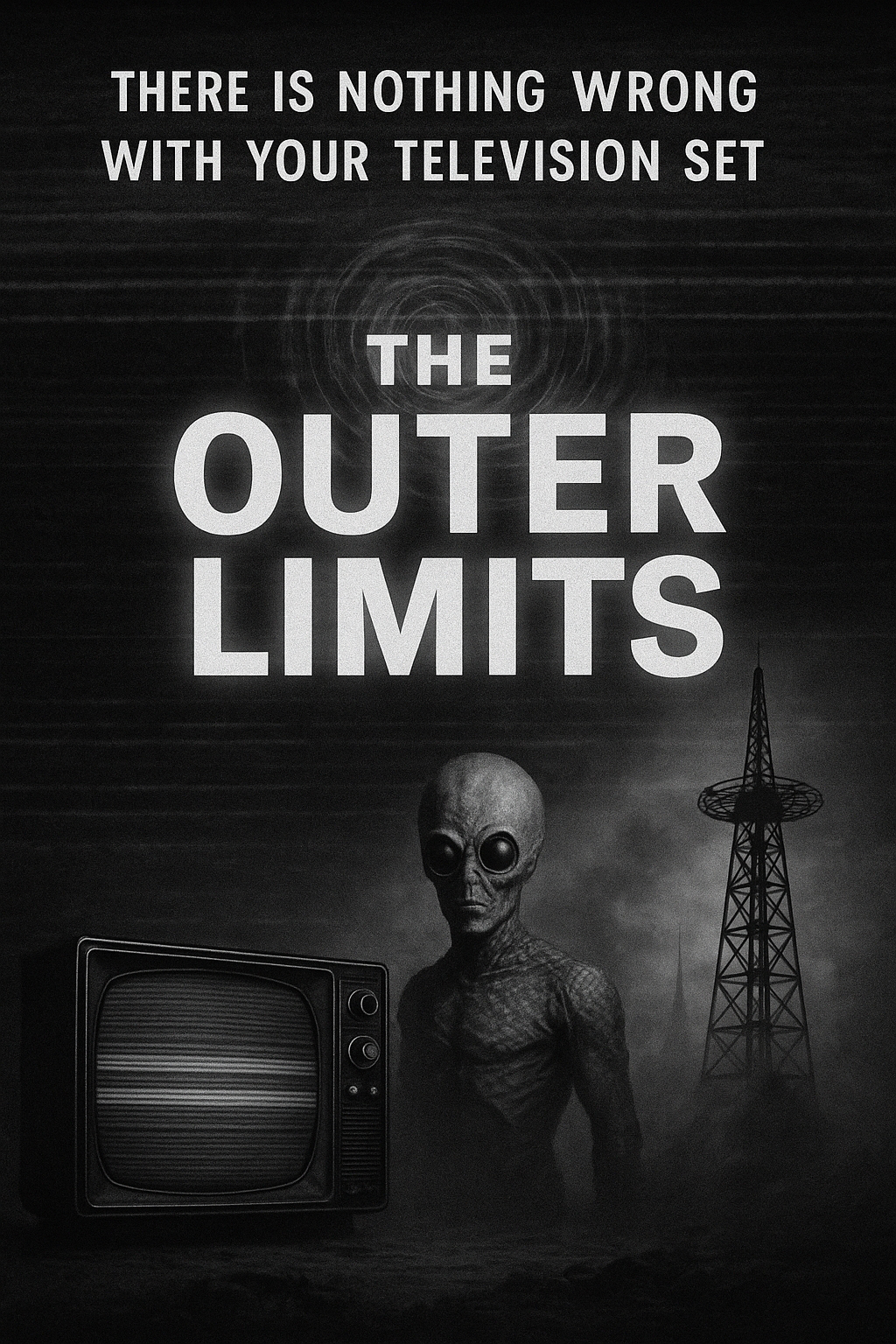by Buzz Drainpipe, unauthorized media archaeologist
There’s a flicker between channels—a faint hum behind the static. It’s not a glitch. It’s The Outer Limits, still pulsing with cold fire decades after its original 1963 broadcast, whispering truths in a voice far too calm for the nightmares it delivers.
When people talk about classic TV sci-fi, they mention The Twilight Zone like it’s gospel. And sure, Rod Serling gave us existential parables and poetic justice—but The Outer Limits was something meaner. Something raw. It wasn’t a sermon; it was an experiment. A warning shot wrapped in radiation and reel-to-reel paranoia. If The Twilight Zone was the mind, The Outer Limits was the nervous system—twitching, wired, on the verge of seizure.
The Control Voice: Your First AI Overlord
From the very first frame, The Outer Limits made it clear: You are not in control. The infamous opening monologue wasn’t just eerie, it was prophetic. “Do not attempt to adjust the picture. We are controlling transmission…”—a statement that reads now like every terms-of-service agreement you never read, every algorithm you let parent your thoughts.
That Control Voice wasn’t just theatrics. It was the first on-screen AI overlord. It told you what was happening and dared you to resist. You didn’t. You couldn’t. And that’s what made it unforgettable.
Science as Horror, Progress as Punishment
Where other shows used sci-fi as window dressing, The Outer Limits used it as a scalpel. It cut into big questions: What happens when we mess with nature? What do we become when we lose our humanity to power, to ambition, to circuitry?
Episodes like “The Zanti Misfits” or “Demon with a Glass Hand” weren’t just stories—they were postcards from the future we’re now living in. Surveillance. Bio-modification. Tech addiction. Corporate overreach. Outer Limits foresaw it all with stage sets and shadows.
It didn’t care if the effects looked cheesy—it cared that the ideas burned into your brain.
No Happy Endings—Just Mutations
This wasn’t comfort food TV. The Outer Limits wasn’t interested in wrapping things up neatly. You didn’t walk away uplifted—you walked away altered. Sometimes the monster wasn’t the alien—it was the company man, the general, the genius who forgot he was made of flesh and not wire.
It was sci-fi with teeth, with fallout. A show that didn’t just question the limits of science—it crossed them, dragging you along for the ride.
Still Broadcasting
Why does it resonate in 2025? Because we live in a world built by those same questions. Because we are the experiment now. Because when we look at the headlines—biotech glitches, rogue AI, drone wars—we’re watching The Outer Limits play out in real time.
It’s not retro. It’s a mirror.
The Control Voice is still speaking. You just call it your phone now.

No comments:
Post a Comment